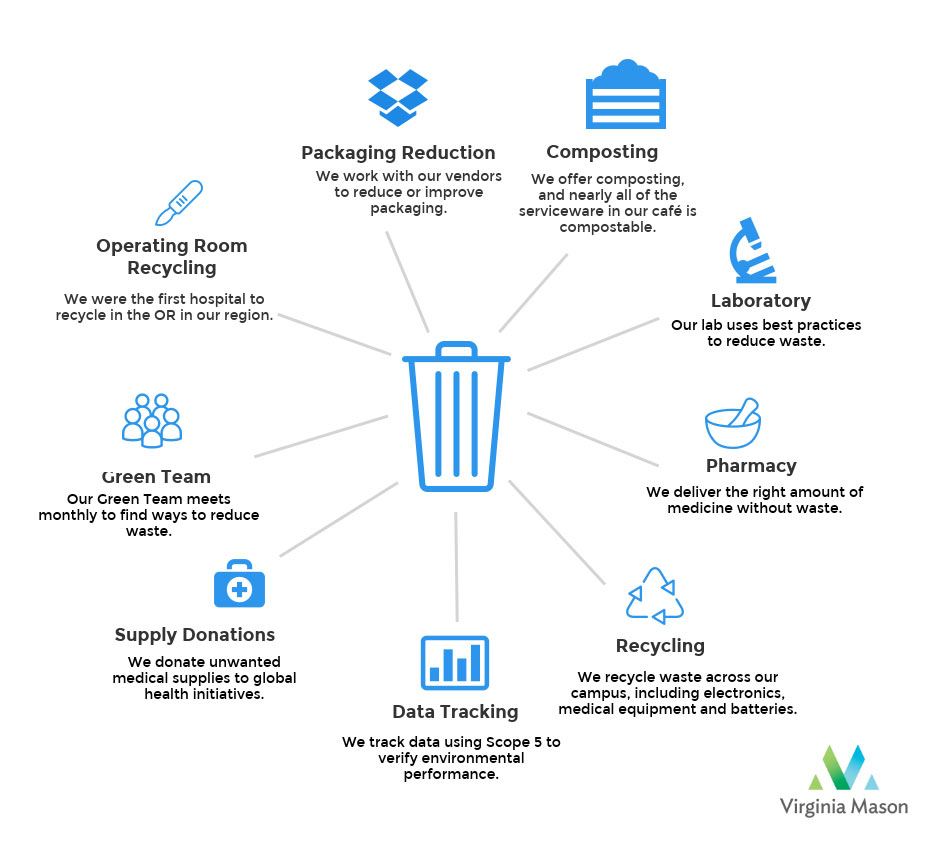You are probably practicing zero waste at home. This could involve going for plastic-free shopping or in purchasing reusable and unpackaged supplies. Slowly, going zero waste becomes a part of your life and personality. That will eventually lead you to thinking about getting these habits to your workplace. Is it feasible going zero waste at work? Well, yes, of course!
Companies and workers can practice zero waste even in the workplace. It is not impossible to apply such practices given with the proper knowledge and ways to handle this matter. Since more and more people are shifting to zero waste lifestyle as they become more conscious on the wastes they produce, the transition of your workplace to sustainable practices would not be as difficult as you think, because there are more options now than those of the last ten years.
How can workers and companies practice going zero waste at work?
There are a lot of ways to address this. However, before anything else, you have to start with awareness. Awareness can help companies to rethink their practices. It is necessary for them to check if the companies’ practices are sustainable and gearing towards environmental conservation or if it is the other way around.
Awareness also requires information about the current environmental situation that is currently occurring. Companies’ awareness will help them understand the problem and conceptualize how companies can reduce their waste productions and practice going zero waste at work.

Sustainable practices such as going zero waste at work is actually beneficial for your workplace as zero waste is essentially a waste reduction program. According to EPA, pro-active organizations have seen the benefits of establishing a waste reduction programs. Some of these benefits as mentioned by the EPA are the following:
- Save Money – Increasing recycling can cut your disposal costs and improve your bottom line.
- Knowledge is power – By understanding the amount and types of wastes your organization produces, you’re better positioned to find ways to reduce hauling costs and negotiate for waste and recycling services that actually fit your needs.
- Streamline reporting and information sharing – Tracking your waste management activities in one platform and using a standard set of metrics, makes it easier to share and report information with stakeholders.
- Enhance sustainability – Managing waste, water, and energy more efficiently are core components of sustainability. Improving your organization’s sustainability can boost your corporate image, attract quality tenants to your properties and positively engage employees.
- Reduce greenhouse gas emissions – Waste prevention and recycling offer significant potential for reducing greenhouse gas emissions.
- Conserve resources – Reuse and recycling conserves natural resources including trees, metals and water.
When going zero waste at work, it is also necessary to identify what type of wastes and how much of these wastes are being produced by your company and workers. It is essential to keep a record of these wastes so that it would be easy to come up of what particular practices are applicable to address them.
Setting this up will require you to come up with a certain goal. Defining what your company and workers should achieve would help you to run the program with greater success. Goals should also be realistic and feasible. It does not have to be overwhelming and laborious. Remember that the reason why you are going zero waste at work is because you want to become sustainable. For instance, you can lessen your companies waste production by 20 percent from that 100 percent at the present in 6 months.
To achieve the goal, your company need to come up with the proper methodology and approaches. Perhaps, you can come up with a short survey within your stakeholders, clients and workers to allow you to have an idea what works well. Their views will enhance your ways to address the waste production.
With the methods and approaches, it also requires you to look for partner organizations such as that will help to run the program such as the Waste Management, Waste Connections and many more. These partner organizations will help you in waste disposal and recycling wastes. There are also Non-government Organizations that help in solid waste management such as 5 Gyres and Algalita.
What is good with these NGOs is that they can experiment freely with innovative approaches and, if necessary, to take risks while being flexible and adaptable to situations and responses depending on your needs. They are able to develop integrated projects and sectoral projects. Usually, the projects of NGOs are not only beneficial for your company but also good for certain communities that are vulnerable to environmental problems.
In fact, a study entitled, “Role of NGOs and CBOs in Waste Management” by Ahsan et al revealed, “a total of 22 NGOs and CBOs are involved in MSW management in 31 wards of Khulna City Corporation. About 9 to 12% of total generated wastes are collected by door-to-door collection system provided by mainly NGOs and CBOs using 71 non-motorized rickshaw vans. A major portion of collected wastes is disposed to the nearest SDS by these organizations and then transferred to UDS or to private low-lying lands from there by the city authority. A small portion of organic wastes is going to the composting plants of NGOs.”
Aside from having a partner, zero waste management practices such as Refuse, Reduce, Reuse, Rot and Recycle e should also implemented within the company. You can start to reduce the use of materials such as in packaging of products by utilizing compostable materials such as paper or mushrooms or by coming up with an exchange and return system where you can encourage clients reuse containers. This will not cut your cost production but also an effective way in promoting sustainability in going zero waste.
With all of these, it is significant to assess your program. Assessing it will help you to generate ideas to further your zero waste practices as you can discover new things and will allow you to improve your company’s program. According to the EPA, you have to list your most promising choices and evaluate them if they are in accordance to your goal. The EPA suggested that when analyzing and selecting your activities you have to consider the following:
1. Focus first on waste prevention, which will help eliminate waste at the source, saving natural resources and energy and cutting costs.
2. Evaluate recycling and composting options to manage waste that cannot be prevented.
3. Implement waste reduction activities best suited for your organization. You may want to start off with one or two clear activities to get others engaged. Then roll out other initiatives as some of the early waste prevention and recycling behaviors become a habit.
4. Lastly, you have to come up with a reflection. Coming up with a reflection on the learnings and lessons of going zero waste at work is not only beneficial your workplace but also to other companies who would like to the same.
How can you work safer and cleaner?
Going zero waste at work can create a safer and cleaner workplace. A safe and clean workplace is a conducive environment to work on. Hence, it will also lessen your stress. However, creating a safer and cleaner workplace requires individual efforts. To achieve this, you also need a strategy to keep your workplace safe and clean. Given this, you can apply the 5S of good housekeeping.
5s is a standardized method to keep your workplace organized, safe and efficient so that you can increase your work’s productivity. It was originated from the production techniques observed in world-leading manufacturing companies. 5S is divided to five phases: Sieri, Seiton, Siesu, Sieketsu, and Shitsuke. These terms are derived from Japanese work culture in recognition to the Japanese companies who lead these practices.
- Seiri (sorting)- you need to sort the materials or supplies in your workplace. By doing this, you can free some production spaces, easily conduct inventory, lessen time consumption in searching materials and have easier mobility both goods and workers.
- Seiton (systematize)- systematic arrangement of materials and equipment can lessen time spent in searching for items, transporting and handling operations, and requiring fewer efforts and energy such as heavy lifting.
- Seiso (sweep) is characterized by these observable factors such as tidiness and order in the workplace are maintained. It can prevent unwanted situations. It also helps in spotting contradictions and other non-compliance practices which can be addressed as soon as possible.
- Seiketsu (standardize)- developing your own mechanism to address operations in the workplace that can result to maintain cleanliness and orderliness in the workplace. This can also help in identifying and preventing equipment function or mishandled operations.
- Shitsuke (sustain)- this requires you to promote sustainable practices such as refresher seminar and dialogues on zero waste practices that can help encourage employees to do sustainable practices without forcing them to do it. This will create long term effect in work’s productivity while health and safety measures are improving.
Doing the above mentioned practices will surely guarantee your success not just in reducing waste but also in impacting both the lives of the workers and the environment.




